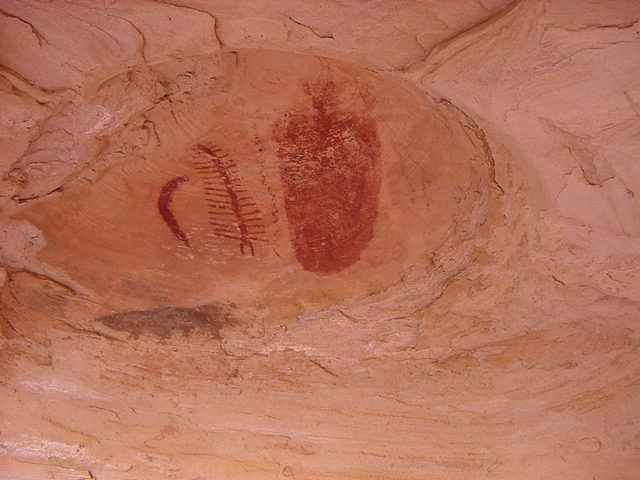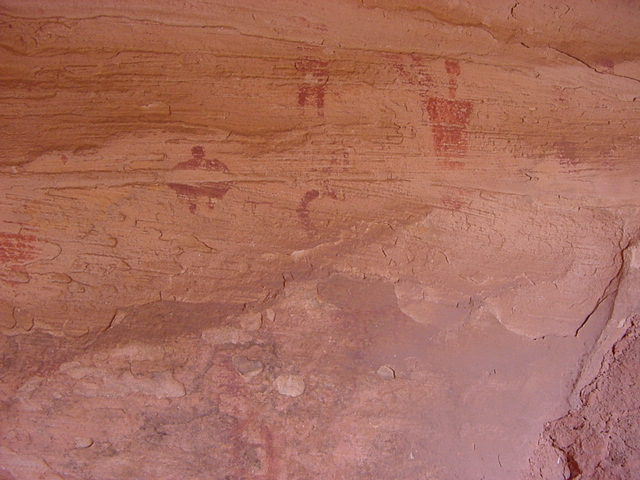Moab Rock Art
The Moab area abounds with rock art, stone structures such as dwellings, granaries (storage units) and kivas (ceremonial and community structures). Evidence of earlier use patterns consist of temporary camp sites, broken stone tools, pot shards and other implements.
The most plentiful and intriguing examples of prehistory in the Moab area are the many rock art sites on cliffs and boulders. Petroglyphs, are graphics 'pecked' or abraded into the rock, probably by using harder rocks as tools. Pictographs are representations painted on the rocks in one or more colors made from mineral pigments or plant dyes. Panels of both types, and panels which exhibit both styles are found in the area. Many sites are in remote locations, however, there are plenty that are accessible to passenger vehicles. A Rock Art Auto Tour brochure is available at the Moab Information Center in Moab.
The Golf Course Rock Art site
is near the Moab Golf Course. Here, an area approximately 30 by 90 feet is covered with human and animal figures. Along Kane Creek Boulevard at various sites there are panels showing human figures, some with headdresses, deer, bighorn sheep, snakes, bear paws and several abstract graphics. The Courthouse Wash site is located within Arches National Park. It is accessed from a parking lot off US 191 just north of the Colorado River bridge. A half mile hike leads to the panel which is almost 19 feet high and 52 feet long. It has both pictographs and petroglyphs with figures resembling humans, bighorn sheep, shields, scorpions, a large beaked bird, dogs, and abstract forms.
Potash Scenic Byway 279 an 'Indian Writing' interpretive sign at one site designates the spot where human figures lined up in a row like 'paper dolls', and horned human forms holding shields are located 25-30 feet up the sheer rock wail.
Wolfe Ranch Historic Ute rock art is visible at the in Arches National Park near the Delicate Arch trailhead. The panel depicts a classic hunting scene.
Sego Canyon located north of the town of Thompson Springs along 1-70, shelters several panels attributed to several cultural groups. This BLM administered site has excellent interpretive signs.
The intriguing and plentiful structures, camps, and rock art are among the few mysteries left of an earlier time. Because these cultural sites are very fragile, when visiting them please always stay on established trails, and respect fences or guard railings. Do not climb or lean on the roofs or walls of ruins or enter cliff dwellings. In fact, it is best not to touch these ruins in any way. Particularly do not touch rock art. Oils on even the cleanest hands, over time, do irreparable damage. Making paper rubbings or tracings can also cause damage. Always camp, sleep and cook away from these sites. All remnants of prehistoric cultures including rock art, and artifacts on public and private land are protected by state and federal laws. It is never legal to 'take' any type of artifact from any site. Such safeguards are established to protect these irreplaceable resources. The BLM publishes a minimum impact guide to cultural resources which provides vital information for interpreting and protecting the remnants of these cultures. The guide is available at the Moab Information Center.

